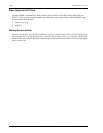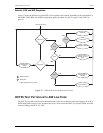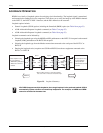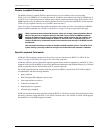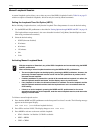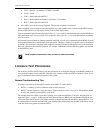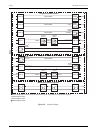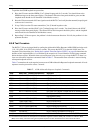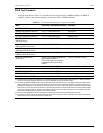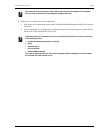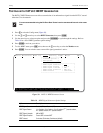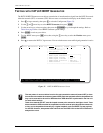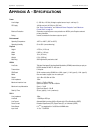
Testing LTPH-UM-1031-03, Issue 3
52 September 12, 2003 H4TU-C-319 List 1
To perform the GNLB loopback test procedure:
1 Have the CO tester send the NREM (3-in-7) inband loopup code for 5 seconds. You should observe the
NREM message on the front-panel display. (The Status LED on the front panel should be green, and the
loopback mode should also be identified on the Monitor screen.)
2 Have the CO tester transmit a DS1 test signal towards the H4TU-C and verify that the returned (looped) signal
to the test set is error-free.
3 If step 2 fails, have the CO tester transmit the (3-in-5) inband loopdown code.
4 Have the CO tester send the NLOC (4-in-7) inband loopup for 5 seconds. You should observe the NLOC
message on the front-panel display. (The Status LED on the front panel should be yellow, and the loopback
mode should also be identified on the Monitor screen.)
5 Repeat Step 2. If the test passes, the problem is in the downstream direction. If it fails, the problem is in the
upstream direction.
A3LB Test Procedure
The H4TU-C-319 can be looped back by sending the Addressable Office Repeater (AOR) LPBK activation code
1111-1111-0001-1110 (FF1E) for at least 5 seconds. This causes the H4TU-C to enter the NLOC state. The
Loopback Time-Out setting (see “Setting the Loopback Time-Out Option (LBTO)” on page 48) determines the
duration of this loopback unless it is overridden by the reception of a second identical 16-bit loopup command
before the timer expires. When this time-out override state exists, the only way to loop the H4TU-C down is to
issue one of the three loopdown commands listed in Table 17. The automatic time-out mode is restored during
subsequent loopback sessions.
Table 17 summarizes the codes required to execute an A3LB Addressable Repeater Loopback command. All code
sequences must be present for at least 5 seconds.
Table 17. A3LB Addressable Repeater Loopback Commands
Name Binary Code
(a)
(Hexadecimal Equivalent)
(a) The leftmost bit arrives first in all sequences. The detection algorithm functions reliably with a random 10
-3
Bit Error Ratio
(BER) on the facility. The entire arming and loopback sequence can also be initiated at the remote H4TU-R location.
Description
NLOC 1111-1111-0001-1110 (FF1E) H4TU-C loopup from NI.
CREM 0011-1111-0001-1110 (3F1E) H4TU-C loopup from CI.
NREM 1111-1111-0000-0010 (FF02) H4TU-R loopup from NI.
NDU1 1111-1111-0000-0100 (FF04) Signal is looped back to the network at H4D1.
CDU1 0011-1111-0000-0100 (3F04) DS1 signal from customer is looped back to the customer at H4D1.
NDU2 1111-1111-0000-0110 (FF06) Signal is looped back to the network at H4D2.
CDU2 0011-1111-0000-0110 (3F06) DS1 signal from customer is looped back tot he customer at H4D2.
D1LB Dual loopback at H4D1.
D2LB Dual loopback at H4D2.
CLOC 0011-1111-0000-0010 (3F02) H4TU-R loopup from CI.
SMJK 11000-11000-11000 ... H4TU-R loopup from NI.
SMJK 100000 100000 100000 ... H4TU-R loopup from NI.
SMJK 1111-1111-0100-1000 (FF48) H4TU-R loopup from NI (ESF-DL).
Loopdown 11100-11100-11100 ... H4TU-C and H4TU-R loopdown from NI OR CI.
Loopdown 100-100-100 ... H4TU-C and H4TU-R loopdown from NI OR CI.
Loopdown 1111-1111-0010-0100 (FF24) H4TU-C and H4TU-R loopdown from NI OR CI (ESF-DL).



